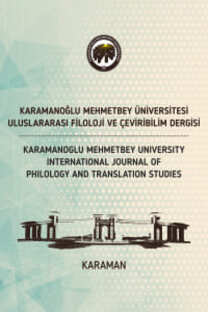From Landscapes to Mindscapes: Ecocritical Perspectives on the Sense of Place in Jane Austen’s Emma
This article aims to analyze Jane Austen’s Emma (1816) with a specialized interest in environmental consciousness and place-based identities, presented in the novel, through a close textual analysis of the relationship between the characters and their environment. Accordingly, it discusses the potential of the sense of place to invoke certain environmental values through which the readers could appreciate the interdependent relationship between human beings and their natural surroundings. To this end, it first discusses how Austen’s “environmental imagination” (to use Lawrence Buell’s term) works through Emma to draw a parallelism between the environment in which she grew up as a child, that is, Steventon, and her fictional environment that she created for this specific novel, Highbury. The reflections of her environmental imagination are particularly worth revisiting in line of the environmental ethics philosopher Jim Cheney’s idea of the parallelism between “landscapes and mindscapes” and Holmes Rolston III’s “storied residences”. These two theorists similarly suggest that landscapes are directly or indirectly reflected through mindscapes, and narrative is the most convenient mode to contextualize this parallelism. Building on these theoretical insights, this article displays how Austen is a keen observer of her natural surroundings but also argues that there is a place-based approach in her characters that potentially offer an environmental consciousness for the reader in Emma, explored within the special light of the ecocritical understanding of place.
Anahtar Kelimeler:
sense of place, ecocriticism, Jane Austen, Emma, landscape, mindscape
FROM LANDSCAPES TO MINDSCAPES: ECOCRITICAL PERSPECTIVES ON THE SENSE OF PLACE IN JANE AUSTEN’S EMMA
This article aims to analyze Jane Austen’s Emma (1816) with a specialized interest in environmental consciousness and place-based identities, presented in the novel, through a close textual analysis of the relationship between the characters and their environment. Accordingly, it discusses the potential of the sense of place to invoke certain environmental values through which the readers could appreciate the interdependent relationship between human beings and their natural surroundings. To this end, it first discusses how Austen’s “environmental imagination” (to use Lawrence Buell’s term) works through Emma to draw a parallelism between the environment in which she grew up as a child, that is, Steventon, and her fictional environment that she created for this specific novel, Highbury. The reflections of her environmental imagination are particularly worth revisiting in line of the environmental ethics philosopher Jim Cheney’s idea of the parallelism between “landscapes and mindscapes” and Holmes Rolston III’s “storied residences”. These two theorists similarly suggest that landscapes are directly or indirectly reflected through mindscapes, and narrative is the most convenient mode to contextualize this parallelism. Building on these theoretical insights, this article displays how Austen is a keen observer of her natural surroundings but also argues that there is a place-based approach in her characters that potentially offer an environmental consciousness for the reader in Emma, explored within the special light of the ecocritical understanding of place.
Keywords:
sense of place, ecocriticism, Jane Austen,
___
- Austen, J. (2003). Emma. Oxford: Oxford University Press. Original work published in 1816.
- Bate, J. (1999). Culture and environment: from Austen to Hardy. New Literary History 30 (3), 541–560. Retrieved from http://www.jstor.org/stable/20057554.
- Batey, M. (1996). Jane Austen and the English landscape. London: Barn Elms.
- Bramer, G. R. (1960). The setting in Emma. College English 22 (3), 150–156.
- Brown, J. (2014). Austen’s mental maps. Critical Survey 26 (1), 20–41.
- Buell, L. (2001). Writing for an endangered world: Literature, culture, and environment in the US and beyond. Cambridge: Belknap.
- Byrne, S. (2014). Jane Austen’s possessions and dispossessions: the significance of objects. London and New York: Palgrave Macmillan.
- Cheney, J. (1993). Postmodern environmental ethics: ethics as bioregional narrative. In S. J. Armstrong and R. G. Botzler (Eds.), Environmental ethics: Divergence and convergence (pp. 86–95). New York: McGraw-Hill. Herbert, D. (2001). Literary places, tourism and the heritage experience. Annals of Tourism Research 28 (2), 312–333.
- Lascelles, M. (1991). Jane Austen and her art. London and Atlantic Highlands: Athlone. Originally published in 1939. MacDonagh, O. (1991). Jane Austen: Real and imagined worlds. New Haven: Yale University Press.
- Moore, R. E. (2011). The hidden history of Northanger Abbey: Jane Austen and the dissolution of the monasteries. Religion&Language 43 (1), 55–80.
- Park, Y-M., and Rajan, R. S. (Eds.) (2000). The postcolonial Jane Austen. London and New York: Routledge.
- Rolston III, H. (1988). Environmental ethics: Duties to and values in the natural world. Philadelphia: Temple University Press.
- Watkins, S. (1990). Jane Austen’s town and country style. London: Random House Incorporated.
- Wiltshire, J. (1997). Mansfield Park, Persuasion, Emma. In E. Copeland and J. McMaster (Eds.), The Cambridge companion to Jane Austen (pp. 58–83). Cambridge: Cambridge University Press. Wiltshire, J. (2014). The hidden Jane Austen. Cambridge: Cambridge University Press.
- Yayın Aralığı: Yılda 2 Sayı
- Başlangıç: 2018
- Yayıncı: Karamanoğlu Mehmetbey Üniversitesi
Sayıdaki Diğer Makaleler
Cahiliye Döneminin Meşhur Üç Medîh Şairi En-Nâbiğa, Zuheyr ve El-‘Aşâ
A Female Wizard’s Cry for Equal Rights: Terry Pratchett’s Equal Rites
Read Dangerously: The Subversive Power of Literature in Troubled Times
المصطلحات اللسانية عند أحمد مختار عمر
From Landscapes to Mindscapes: Ecocritical Perspectives on the Sense of Place in Jane Austen’s Emma
Franz Kafka'nın Ein Landarzt adlı Anlatısının Çevirilerinde Belirsizliğin Diliyle Temaslar
